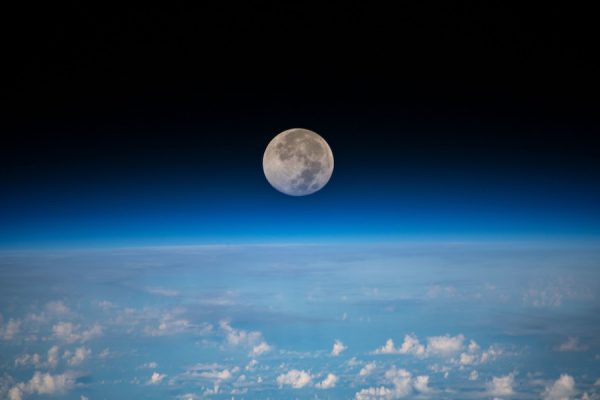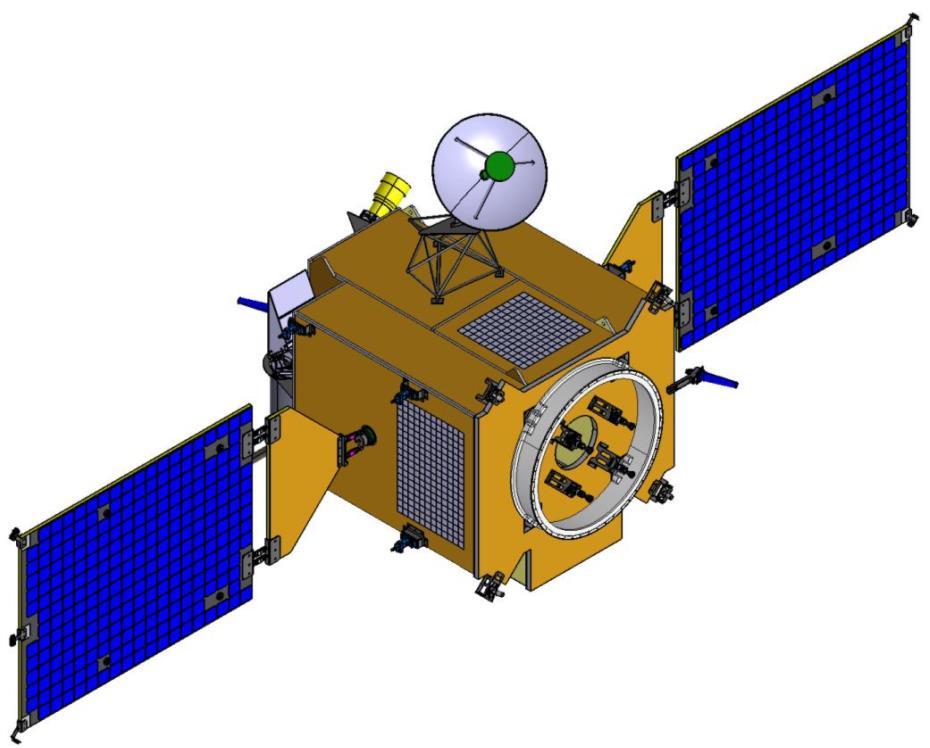Launch of South Korean lunar orbiter delayed to 2022 – Spaceflight Now

The launch of South Korea’s first moon orbiter has been delayed from December 2020 until July 2022 after the mission encountered technical issues during development, officials recently announced.
The design of the Korea Pathfinder Lunar Orbiter, or KPLO, has grown beyond its original launch weight, and engineers need more time to complete the detailed design of the spacecraft, South Korea’s space agency announced Sept. 10.
The Korea Aerospace Research Institute, or KARI, said the country’s first mission to another planetary body suffered from “technical limitations” after teams completed the project’s preliminary design review in 2017.
The mission is now in the detailed design phase, and engineers are working with test models of the orbiter’s hardware before assembling the KPLO spacecraft itself.
The KPLO mission will launch on a SpaceX Falcon 9 rocket from Cape Canaveral.
An indigenous South Korean rocket named the KSLV 2 is scheduled for its first orbital launch in 2021, and KARI plans to loft future space missions, including an eventual lunar lander, on South Korea’s own launch vehicles.
KARI said in a statement that the lunar orbiter’s launch weight, or wet mass, has grown from 1,212 pounds (550 kilograms) to 1,494 pounds (678 kilograms). Engineers were concerned the increased weight would limit the amount of propellant that could be loaded into the spacecraft, reducing the mission’s operating life after arriving in orbit around the moon.
Mission managers have altered the KPLO flight plan to maintain the mission’s planned one-year operating lifetime.
The spacecraft was originally supposed to go into a circular orbit roughly 60 miles (100 kilometers) above the moon for its year-long mission. The KPLO spacecraft will now fly for nine months in an elliptical, or egg-shaped, orbit ranging between 60 miles and 180 miles (300 kilometers) above the lunar surface, then maneuver into the circular 60-mile-high orbit for three months of science observations.
South Korean officials conducted an internal review of the mission, then consulted independent experts in the space field before deciding to accept the weight growth, maintain the spacecraft’s current design, and delay the launch from December 2020 to July 2022, KARI said.
The review also recommended improvements in internal communication and project management on the KPLO mission.
The KPLO mission will carry a suite of four South Korean scientific instruments to image the moon and help select candidate landing sites for a future South Korean lunar mission. In addition, the orbiter will measure the moon’s weak magnetic field, which scientists believe originates in the lunar crust, map the moon’s elemental composition, and demonstrate technology for a deep space Internet network.
A U.S.-built instrument named ShadowCam will also fly on the South Korean lunar orbiter.
Derived from the main camera on NASA’s Lunar Reconnaissance Orbiter, ShadowCam will peer inside dark craters near the moons poles, where previous missions detected evidence of water ice deposits. The NASA-funded ShadowCam instrument is hundreds of times more sensitive than LRO’s camera, allowing it to collect high-resolution, high signal-to-noise imagery of the insides of always-dark craters using reflected light.

ShadowCam will look for seasonal changes inside the dark craters, called permanently shadowed regions, and map the distribution of boulders. Scientists will combine imagery from ShadowCam and the narrow-angle camera on LRO to create maps inside and outside the permanently shadowed craters, scientists said.
The ShadowCam instrument uses the same basic telescope and much of the same electronics as LRO’s camera. But ShadowCam will have an imaging sensor that is hundreds of times more sensitive than LRO’s.
Mark Robinson, ShadowCam’s principal investigator from Arizona State University, said in an email Friday that the instrument’s development is proceeding as expected. The instrument’s electronics are now in assembly, and the telescope should be finished by end of October, Robinson said.
Once complete, ShadowCam will be shipped to South Korea for attachment to the KPLO spacecraft.
NASA selected the ShadowCam instrument as a U.S. contribution to the South Korean moon mission in 2017.
Water ice hidden in the moon’s permanently shadowed polar craters could be converted into rocket fuel, breathable air and drinking water for future human explorers.
NASA’s Artemis program aims to return astronauts to the moon by 2024 with a landing near the moon’s south pole, where the bulk of the lunar ice deposits have been found.
NASA will offer South Korea tracking and communications services through the agency’s Deep Space Network, and U.S. experts will provide navigation support to the KPLO mission.
South Korea is also establishing its own deep space communications station to support the KPLO mission.
KARI said the KPLO mission was projected to cost around 197 billion won, or about $165 million, from the start of the project’s development in 2016 through launch. In a statement, South Korean officials said the 19-month launch delay will raise the mission’s cost by 16.7 billion won, or about $14 million.
About half of the additional $14 million cost for the KPLO mission will go toward a rebooking fee to meet “contractual conditions” under the terms of KARI’s agreement with SpaceX, KARI said. The other half of the extra cost to the mission will pay for additional testing and labor expenses.
Email the author.
Follow Stephen Clark on Twitter: @StephenClark1.






